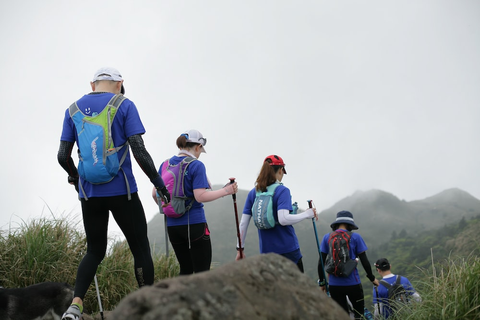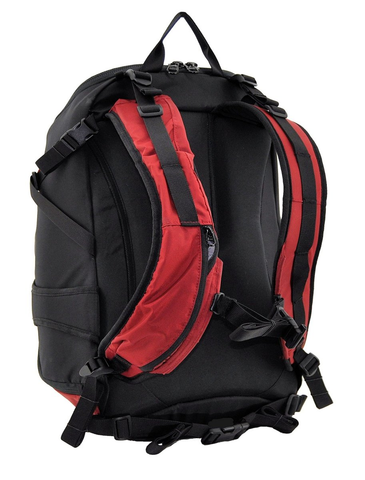Often underestimated, the trekking pack serves as the backbone of every hiker's journey, carrying not just gear but also the potential for a transformative outdoor experience.
In this comprehensive guide, we'll delve into the importance of trekking packs for achieving peak performance on the trails. From exploring the crucial features to considering various factors that make a trekking pack indispensable, we aim to provide hikers with valuable insights to enhance their hiking adventures.
Understanding the Role of Trekking Packs
At its core, a trekking pack is more than just a bag to carry your belongings. It's a carefully engineered piece of equipment designed to provide comfort, support, and organization throughout your hike. Whether you're embarking on a day hike or a multi-day trek, the right trekking pack can significantly impact your overall performance and enjoyment on the trail.
Key Features of Trekking Packs
Make sure you keep the following trekking pack features in mind when getting a new pack for your upcoming outdoor excursions:
1. Ergonomic Design
A paramount aspect of any trekking pack is its ergonomic design, which plays a pivotal role in ensuring comfort and reducing fatigue during extended hikes. Look for features meticulously crafted to distribute weight evenly across your body, such as padded shoulder straps, adjustable hip belts and bear canister holders, and ventilated back panels.

These elements not only provide optimal support but also mitigate strain on your shoulders and back, allowing you to maintain peak performance on the trails. When browsing for trekking packs online, prioritize models that prioritize ergonomics, offering a seamless blend of comfort and functionality suitable for your hiking endeavors.
2. Durability
When it comes to buying hiking gear online, durability reigns supreme, particularly when traversing rugged terrain and unpredictable environments. Opt for lightweight Aarn backpacks constructed from high-quality materials, renowned for their exceptional ruggedness and resistance to tears and abrasions.
These durable fabrics ensure that your trekking pack can withstand the rigors of outdoor exploration, offering unparalleled longevity and reliability even in the harshest conditions. With durability as a top priority, you can confidently embark on your hiking adventures, equipped with a trekking pack that stands the test of time.
3. Capacity and Organization
A well-organized trekking pack is essential for efficient gear management and hassle-free access to essentials while on the trail. Seek out packs that boast ample storage space and thoughtful organization features to accommodate all your gear seamlessly. Look for multiple compartments, pockets, and attachment points designed to stow hiking poles, water bottles, and other essentials securely.
Whether you're embarking on a day hike or a multi-day expedition, a meticulously organized trekking pack ensures that your gear remains easily accessible, allowing you to focus on the journey ahead with confidence.

4. Weather Resistance
When exploring the vast array of hiking gear online, prioritize weather-resistant trekking packs to safeguard your gear against the elements. Opt for packs crafted from water-resistant or waterproof materials capable of repelling moisture and keeping your belongings dry during sudden downpours or river crossings.
Investing in a weather-resistant trekking pack provides added peace of mind, allowing you to tackle inclement weather conditions without compromising the integrity of your gear. With weather resistance as a fundamental feature, you can venture into the great outdoors fully prepared for whatever Mother Nature throws your way.
5. Weight
As ultralight backpacks continue to gain popularity among hikers seeking minimalist design and enhanced mobility, consider your hiking style and preferences when selecting a trekking pack. Strike a delicate balance between weight, durability, and functionality to ensure optimal performance on the trails.

Prioritize models that offer the perfect blend of lightweight construction and durability when buying an ultralight daypack for hiking. By carefully considering the weight of your trekking pack, you can enjoy unparalleled agility and comfort during your outdoor adventures, maximizing your enjoyment of the natural world while minimizing unnecessary strain on your body.
Factors to Consider When Choosing a Trekking Pack
Trip Duration
The duration of your hike significantly influences the size and capacity of the trekking pack you'll need. For shorter day hikes, consider opting for a compact daypack that can accommodate essential items such as water, snacks, a first aid kit, and navigation tools. However, for longer multi-day treks, invest in a larger pack with sufficient room to carry camping gear, clothing, food, and other supplies necessary for extended stays in the wilderness.
Terrain and Conditions
Assessing the terrain and weather conditions of your hiking destination is crucial in choosing the right trekking pack. If you're planning to tackle rugged terrain or embark on winter hikes, prioritize packs made from durable and weather-resistant materials such as ripstop nylon or Cordura.
Look for packs with reinforced bottoms and abrasion-resistant panels to withstand rough trails and harsh environmental conditions. Additionally, consider packs with built-in rain covers or waterproof coatings to keep your gear dry during wet weather.
Fit and Comfort
A well-fitting trekking pack is essential for maintaining comfort and stability during long hikes. Look for packs with adjustable shoulder straps, padded hip belts, and a customizable suspension system to ensure a snug and supportive fit.
Proper weight distribution is key to preventing fatigue and discomfort, so take the time to adjust the pack's straps and load lifters to distribute weight evenly across your body. Test the pack's fit by walking around with it fully loaded to ensure it feels comfortable and secure.
Organization and Accessibility
A well-organized pack can streamline your hiking experience by providing easy access to essential items when you need them most. Look for packs with multiple compartments, pockets, and attachment points to help you stay organized on the trail.
Consider packs with features such as hydration bladder sleeves, zippered hip belt pockets, and stretch mesh side pockets for storing water bottles, snacks, and other frequently used items within reach. Additionally, opt for packs with front-loading or panel-loading designs for convenient access to gear without having to unpack the entire pack.
Weight
Lightweight backpacking gear is gaining popularity among hikers for its minimalist design and enhanced mobility on the trail. When selecting a trekking pack, prioritize lightweight materials and streamlined designs to minimize fatigue and allow for faster, more efficient hiking.
Look for packs made from lightweight yet durable fabrics such as Dyneema or Cuben Fiber, which offer excellent strength-to-weight ratios without sacrificing durability. Additionally, consider removing unnecessary features or accessories from your pack to further reduce weight and optimize performance on the trail.
Budget
Establishing a budget for your trekking pack is essential to narrow down your options and find the best value for your money. While high-end packs may offer advanced features and premium materials, there are plenty of budget-friendly options available that still provide durability and functionality for outdoor adventures.
Consider factors such as brand reputation, warranty coverage, and user reviews when comparing packs within your budget range. Keep in mind that investing in a quality trekking pack is a long-term investment in your outdoor pursuits, so choose wisely based on your needs and priorities.
Long-Term Benefits of Buying Quality Hiking and Camping Backpacks
Investing in a quality lightweight hiking backpack goes beyond just convenience; it's an investment in your physical well-being and overall hiking experience. Here's why trekkers should prioritize a top-notch lightweight hiking backpack:

Spinal Health: Carrying a heavy backpack for extended periods can put significant strain on your spine, leading to discomfort and potential long-term spinal issues. A lightweight hiking backpack, with its ergonomic design and weight distribution features, helps alleviate this strain, reducing the risk of back pain and injury.
Posture Support: A properly fitting lightweight backpack encourages better posture by distributing weight evenly across your body. This promotes a more natural alignment of the spine and shoulders, reducing the likelihood of slouching or hunching over while hiking.
Muscle Fatigue Reduction: Carrying excess weight can quickly lead to muscle fatigue, especially in the shoulders, neck, and back. An ultralight hiking backpack minimizes the strain on these muscles, allowing you to hike longer distances with less fatigue and discomfort.
Improved Balance and Stability: A well-designed lightweight backpack helps maintain your center of gravity, enhancing your balance and stability while navigating challenging terrain. This reduces the risk of trips, slips, and falls, ensuring a safer hiking experience.
Temperature Regulation: Heavy, bulky backpacks can trap heat against your back, leading to excessive sweating and discomfort, especially in hot weather. A hiking backpack with breathable materials and ventilation systems helps regulate your body temperature, keeping you cool and comfortable on the trail.
Gear up for your next adventure with Light Hiking Gear's premium selection of ultralight backpacks, hiking gear online, and lightweight backpacking gear. Explore our collection today and discover the perfect daypack for hiking, Alpine ski packs, and Couloir ski packs to elevate your outdoor experience. Shop now.




0 comments